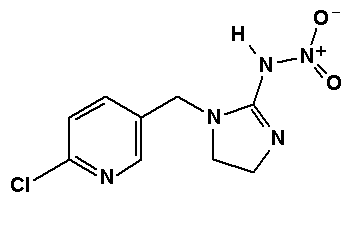Imidacloprid binds irreversibly to the nicotinic acetylcholine receptors (nAChRs) in the insect nervous system, and their activation ultimately leads to the death of the neuron (Casida and Durkin, 2013). Imidacloprid toxicity increases upon the molecule’s cumulative binding to nAChRs, and the toxic effects can be reinforced even at low-dose exposure over extended periods of time (Tennekes and Sanchez-Bayo, 2011). Interestingly, most of the research concerning this insecticide was focused on acute toxicity studies, while the effects of low-dose and chronic exposure are less explored (Morrissey et al., 2015). Our study shows that the 10-day LC50 values of imidacloprid in C. riparius were 13.5-times lower than 24-h LC50 providing thus further evidence on fortified effects during extended exposure times (Tennekes and Sanchez-Bayo, 2011). Correspondingly, 7-day mean LC50 of imidacloprid (2.1 µg/L) for of Cloeon dipterum was approximately 68 times lower than the mean 24-h LC50 = 143.5 µg/L (Van den Brink et al., 2016), and similar trend was observed also in Hyalella azteca (Stoughton et al., 2008).
References:
Casida, J.E., Durkin, K.A., 2013. Neuroactive insecticides: targets, selectivity, resistance, and secondary effects. Annu. Rev. Entomol. 58, 99-117. https://doi.org/10.1146/annurev-ento-120811-153645.
Tennekes, H.A., Sanchez-Bayo, F.P., 2011. Time-dependent toxicity of neonicotinoids and other toxicants: implications for a new approach to risk assessment. J. Environ. Anal. Toxicol. https://doi.org/10.4172/2161-0525.S4-001. S4:001.
Morrissey, C.A., Mineau, P., Devries, J.H., Sanchez-Bayo, F., Liess, M., Cavallaro, M.C., Liber, K., 2015. Neonicotinoid contamination of global surface waters and associated risk to aquatic invertebrates: a review. Environ. Int. 74, 291-303. https://doi.org/10.1016/j.envint.2014.10.024
.
Van den Brink, P.J., Van Smeden, J.M., Bekele, R.S., Dierick, W., De Gelder, D.M., Noteboom, M., Roessink, I., 2016. Acute and chronic toxicity of neonicotinoids tonymphs of a mayfly species and some notes on seasonal differences. Environ.Toxicol. Chem. 35, 128-133. https://doi.org/10.1002/etc.3152.
Stoughton, S.J., Liber, K., Culp, J., Cessna, A., 2008. Acute and chronic toxicity of imidacloprid to the aquatic invertebrates Chironomus tentans and Hyalella azteca under constant- and pulse-exposure conditions. Arch. Environ. Contam.Toxicol. 54, 662-673. https://doi.org/10.1007/s00244-007-9073-6
Source:
N. Njattuvetty Chandran et al. Chemosphere 209 (2018) 568-577

- Login om te reageren
